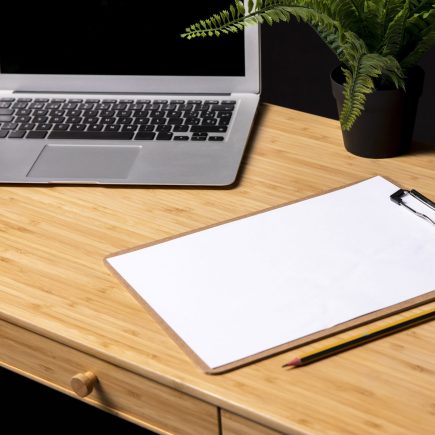
The HOMCOM TV Stand Cabinet (839-281) is designed to support TVs up to 55 inches while providing storage with shelves and compartments. Its modern design blends into living rooms, bedrooms, or entertainment spaces, combining functionality with style.
Estimated Assembly Time: 1 hour
Recommended Assembler(s): 2 adults
Warning and Safety Instructions
- For indoor use only.
- Assemble on a flat, stable, and dry surface.
- Do not confuse similar screws and check sizes carefully.
- Do not fully tighten screws until all parts are connected.
- Keep packaging and small parts away from children.
- Do not exceed the maximum weight capacity.
- Secure the cabinet to the wall using the included safety fittings.
Unboxing Your TV Stand: What’s Inside
Panels & Parts

Hardware Pack

How to Assemble Your TV Stand
Follow the sequence carefully when you are going to assemble your HOMCOM TV Stand Cabinet (839-281).
Step 1: Prepare the Top Panel

- Panel: ① (Top Panel)
- Hardware: A ×8 (M6×35mm bolts)
- Insert 8 bolts (A) into the marked holes on the underside of the top panel.
- These bolts will connect the top to the side and divider panels later.
Step 2: Prepare Side Panels
- Panels: ② (Left Side Panel), ③ (Right Side Panel)
- Hardware: A ×4 (M6×35mm bolts)
- Insert 2 bolts (A) into the marked holes on each side panel.
- These bolts will connect the sides to the bottom and divider panels later.
Step 3: Connect Side Panels to Bottom Panel

- Panels: ② (Left Side), ③ (Right Side), ④ (Bottom Panel)
- Hardware: B ×4 (Cam locks), C ×4 (Dowels)
- Insert C dowels into side panels (②, ③).
- Position bottom panel (④) between side panels.
- Secure using B cam locks ×4.
Step 4: Attach Divider and Back Panel

- Panels: ② (Side), ③ (Side), ④ (Bottom), ⑤ (Divider), ⑥ (Support), ⑩ (Back Panel)
- Hardware: C ×8 (Dowels), D ×8 (M4×35mm screws)
- Insert C dowels into side panels and divider (⑤, ⑥).
- Position the back panel (⑩) and align with sides and divider.
- Secure using D screws ×8.
Step 5: Prepare the Doors

- Panels: ⑧, ⑨ (Doors)
- Hardware: L ×4 (Brackets), E ×8 (Screws), I ×2 (Door stoppers), H ×2 (Screws), O ×2 (Plates), N ×2 (Screws)
- Attach brackets (L ×4) to corners of doors using E screws ×8.

- Fix stoppers (I ×2) at the bottom of each door.
- Install plates (O ×2) with H screws ×2, then secure with N screws ×2
Step 6: Install Magnetic Door Catches
- Panels: ⑤ (Divider), ⑥ (Divider), ⑦ (Shelf), ⑩ (Back Panel), ⑧ (Base Frame)
- Hardware: K ×2 (Magnetic catches), F ×4 (Screws)
- Attach magnetic catches (K ×2) inside the cabinet (on panels ⑤ and ⑥).
- Secure each catch with F screws ×4.
- These will hold the doors (⑧, ⑨) closed firmly.
Step 7: Attach the Doors

- Panels: ⑧ (Left Door), ⑨ (Right Door), ⑤ (Divider), ⑥ (Divider)
- Align door hinges (from Step 5) with pre-drilled holes on panels ⑤ and ⑥.
- Insert doors (⑧, ⑨) into place by sliding hinges into brackets.
Step 8: Attach the Top Panel

- Panels: ① (Top Panel), ⑤ (Divider), ⑥ (Divider), ⑧ (Door), ⑨ (Door)
- Hardware: B ×8 (Cam locks), C ×8 (Dowels)
- Insert C dowels ×8 into dividers and side panels.
- Place top panel (①) on top, aligning with dowels.
- Secure firmly with B cam locks ×8.
Step 9: Secure Back Panel

- Panel: ⑦ (Back Panel)
- Hardware: F ×6 (Screws), G ×6 (Brackets)
- Position brackets (G ×6) evenly along the back panel edges.
- Fix brackets with F screws ×6 to hold the back panel (⑦) securely.
Step 10: Attach the Legs

- Panel: ⑩ (Base Panel)
- Hardware: E ×20 (Screws), M ×4 (Leg Plates), R ×4 (Legs, round)
- Fix leg plates (M ×4) to the corners of the base panel (⑩) using E screws ×20.
- Once plates are secured, screw in the legs (R ×4) firmly into the plates.
Step 11: Secure Cabinet to Wall

- Fix the safety bracket (J) to the back of the cabinet top using screw (E).
- Insert the wall plug (Q) into the drilled hole in your wall.
- Secure the safety strap (P) between the wall plug (Q) and cabinet bracket (J).
- Tighten all screws firmly.
Important: Always secure the cabinet to the wall to prevent tipping, especially if children are present.
When to Call a Professional
- Panels that arrive damaged, cracked, or warped and cannot be assembled properly.
- Screws, cams, or dowels that fail to align even after adjustments.
- Doors or shelves that won’t level despite hinge or screw adjustments.
- A cabinet that wobbles excessively even after tightening hardware and securing to a wall.
- Uncertainty about drilling into your wall type (concrete, drywall, or brick) for anti-tip installation.
Care and Maintenance Tips
- Wipe surfaces with a soft, dry cloth.
- Avoid harsh cleaners or abrasive pads.
- Re-tighten screws every few months.
- Use the wall safety fittings to prevent tipping.
- Keep away from heat and moisture to protect the finish.
Ready for Use
Your HOMCOM TV Stand Cabinet (SKU: 839-281) is now ready to use. With correct assembly, regular care, and proper maintenance, it will provide reliable storage and stylish support for your entertainment setup for years to come.
You can also Download HOMCOM TV Stand Cabinet (839-281) Manual (PDF) for your reference.
FAQs
1. How do I prevent my cabinet from wobbling after assembly?
Ensure all screws and cam locks are fully tightened. Check that the floor is flat and stable. Use the included wall safety strap to secure it against tipping.
2. What if the doors aren’t aligning properly?
Loosen the door hinges slightly, adjust the door position, then retighten. Check that magnetic catches are correctly installed. Small adjustments can level the doors evenly.
3. How can I avoid confusing screws during assembly?
Sort all screws by size and type before starting. Use the instruction diagrams to match each screw to its corresponding step. Only tighten screws after all panels are connected.
4. When should I call a professional for help?
If panels are cracked, warped, or hardware doesn’t align after adjustments. Also call a professional if you’re unsure about wall mounting or anti-tip installation. Safety first!
5. How do I maintain my TV stand’s finish?
Wipe surfaces with a soft, dry cloth regularly. Avoid abrasive cleaners or pads. Keep it away from heat, moisture, and direct sunlight to prevent damage.






















